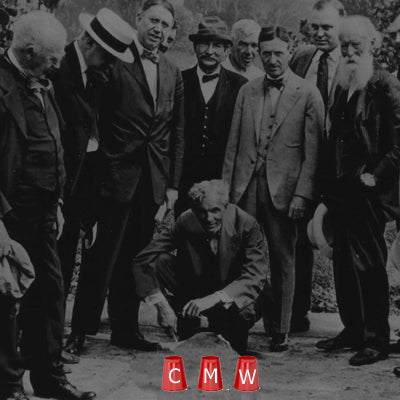What’s the Difference Between a Ford 351 Windsor, Cleveland, or Modified Engine?

351W
The 351W s named for the factory in Windsor, Ontario that produced them. It is part of the long-running Ford small block Windsor V8 family, which also includes the venerable 302 (5.0L) V8. It shares the same small block V8 bellhousing pattern and motor mounts of the August 1964+ Windsor engines*. Key differences from the other Windsor engines include a taller deck height, unique firing order, and longer stroke.
*Pre-August 1964 engines (221/260/289) had a narrow 5-bolt bellhousing pattern, also referred to as the early V8 Windsor pattern. All post-August 1964 Windsor engines use a wider 6-bolt pattern (including all 351W), commonly referred to as the small block V8 pattern. The patterns are not interchangeable.
It’s far more common than the 351 Cleveland, and though it doesn’t have the “high performance” aura of its 351C counterpart, there is plenty of aftermarket support for it. Engine builders and hotrodders have no problems pulling gobs of horsepower out of these engines, and popular upgrades include cylinder heads, camshaft, headers, and intake manifold.
351C
The 351C was built in Ford’s Cleveland, Ohio factory, and is part of the Ford 335 engine family. Back in the day, the 351C was considered the go-to Ford performance engine, thanks to its better-flowing /deep-breathing cylinder heads and stronger crankshaft. the same-displacement 351C was wider, lower, and heavier and shared only its bore spacing and stroke with the 351W. Ford made both 2V and 4V cylinder head versions for the 351C, with the latter 4V heads being the more performance-oriented versions.
Unfortunately, Ford only produced the 351 Cleveland for five years (in the U.S. at least, Australia got the engine up until 1982). The engine’s rarity makes it a more expensive platform for an engine build, though it’s capable of making impressive power with the right upgrades. And, for what it’s worth, there’s still a ton of Blue Oval cache in saying you’ve got a real Cleveland under your hood.
351M
The M is 351M is named after Modified 400 or the Michigan Plant where it was made; Ford never clarified. It is part of the same Ford 335 V8 engine series as the 351 Cleveland. It’s based off of the 400 Modified engine (see note on nomenclature in opening paragraph), which was essentially a 351C with a longer stroke. Unlike the 351C however, the 400 block had the bellhousing bolt pattern of 385-series big blocks. It also had a higher deck height to accommodate the longer stroke.
As the 351 Cleveland faded away, Ford engineers reverted to the original 351C’s 3.5-inch stroke, yet retained the 400’s deck height to create the 351M. The bellhousing bolt pattern on the 351M uses the same pattern as the 385-series big block engines as well. (That means, even though they’re related, transmissions, intake manifolds, and other parts may not be interchangeable between a 351C and 351M.)
It’s also worth noting that the 351M was only available from the factory with a 2-barrel carburetor. By 1982 the engine had been retired from truck production (having already left sedans and coupes in 1979), replaced by the lighter 351W, which was also cheaper to build thanks to its commonality with the 302.
Why the Three Engines?
Though they share displacements, each motor was built and configured for different applications.
For instance, the 4V-351 Cleveland went in the top-tier performance cars, but the 2V–351C engines could be found in a smattering of medium-to-full size 1970-74 passenger sedans too. By comparison, the 351M was used in 1975-82 passenger cars, light trucks, and SUVs.
And that’s what causes the confusion. Swaps between the three engines are common, so you can’t always match the engine to the vehicle you found it in. And, given the lack of interchangeability between key components, it’s absolutely critical to know what you’re wrenching on.
To put it into perspective, Ford offered the 351 Cleveland from 1970-74 (in the U.S.) and the 351 Modified from 1975-82. The 351 Windsor was available from 1969-97, making it by far the most common engine of the trio.
As a final historical footnote, the introduction of the overhead-cam Ford Modular V8 in 1991 meant that the Windsor, Cleveland, and Modified engines represent the final pushrod V8s designed by Ford.
[content from onallcylinders.com]


Comments on this post (0)